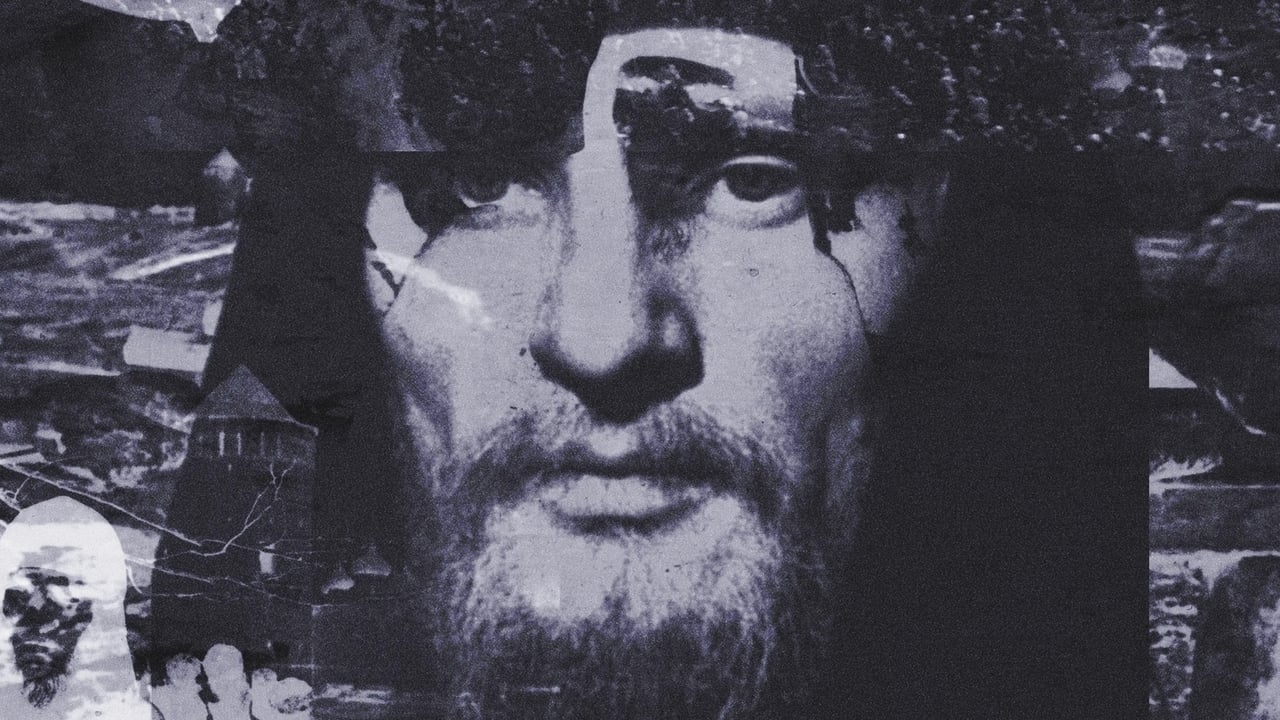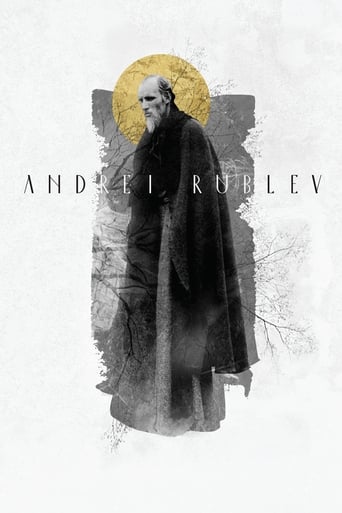

Andrei Rublev is a celebrated 15th century Russian icon painter. This is a series of vignettes related to his biography. Honestly, I wouldn't have watched it if not for its inclusion in the top 250 list. It's definitely an academic necessity for any film fans. The first part has an adventurer test riding a hot air balloon while a superstitious mob rush to stop him. It's surreal and sets the tone of this movie as an ongoing tragedy. The second part is just as tragic. Andrei and his friends are traveling. They take shelter in a village where they are entertained by a jester. Soldiers arrest him for his dissident material. The third part is where I faded. While the first two parts laid down the tone, it doesn't explain our main characters. By the third part, I lose the thread to these characters. I'm not connecting with them. The movie gets epic in part five. It's definitely big and I think a horse gets killed for real. There are some eye-opening scenes and true devastation. Overall, this movie gives a general feel of the era. It lays out the never-ending Russian tragic sensibility. The missing part is that I lose the characters. I don't feel for them. If Russian cinema is your thing, this one is a must.
... View MoreIt's not a biography by any means, it's largely fiction - it's only loosely based off Rublev's life. The film focuses more on his dedication to Eastern Orthodoxy, as well as its role in his evolution as an artist. There are certain characters that each represent different philosophical outlooks under a single unanimous religious belief. In particular, Theophanes is an interesting take on someone being God-loving yet simultaneously overly cynical in his repulsion by His man's vile nature. Outside of characters, the story is alright. The second half is mostly boring in my opinion. Being shot in black and white to emphasize the colorful ending - no doubt to add "life" to the conclusion - is kind of gimmicky, but otherwise a decent film.
... View More"Agreed-upon" to be one of the cinema's masterworks, "The Passion According to Andrei" or simply "Andrei Rublev" revolves around the life of Russia's 15th-century great icon painter. The unique and great Tarkovsky carried the idea of this film from the first beginning, even before finishing his first film "Ivan's Childhood". Yet, after a single premiere screening in Russia (Dom Kino) in the year 1966, the film did not get a public release. Tarkovsky's masterpiece struggled for years in the Soviet Union and upon releasing it in December 1971 there were several cuts applied to it, where it was shown in the 186-minute version (the original was 205 min. long). Before that in 1969, the film was requested for Cannes Film Festival where it won the FIPRESCI prize, and from there on it was widely regarded as one of the greatest movies of all time.Rublev's character appears for the first time leaving the Trinity monastery with two other monks to search for work in Moscow. At the end of the movie, Rublev goes back to the same monastery, where he began his journey, to paint his "Holy Trinity". Between this and that, Rublev accomplished his spiritual journey and found his voice (innerself) not between the walls of monastery, but in the harsh circumstances of life back then. The film indeed shows little about Andrei Rublev himself and yet in a way shows a lot. As always Tarkovsky surprises his audience. The biographical film does not tell us about Rublev in the traditional meaning of the word, since he is most of the times a witness of what was going on and a passive observer. Yet, it tells us more about the interaction of this personality with existence, life, and with the conditions and occurrences of his time. In fact, Tarkovsky's psychological stance and spiritual meditation had to do a lot with the result of this film. That is why many regarded it as an allegory to Tarkovsky's own struggles in Russia or with his own-self. It is then the passion according to both Andrei Rublev and Andrei Tarkovsky.The film is divided into eight chapters (with a prologue and epilogue) each with a unique title. The opening scene starts with a prologue of a hot air balloon ride. Some consider this amazing scene as an allegory to our spiritual relationship with the "world of appearances". It may also seem an allegory to the struggles of the innovative, the spiritual, and the human in general with the circumstances life presents. Well, it may also mean both; since Tarkovsky uses powerful images that carry lots of meanings to evoke our emotions and drive us to react to them from our perspective. A horse (to Tarkovsky it resembles life) is seen collapsing. Rublev then is shown leaving the monastery.. the journey begins.Envy, desire, love, betrayal, freedom, faith.. wars and tortures and murders and struggles all of which Rublev feels and witnesses, and so he'd be greatly affected. He becomes disturbed and shaken.. and undergoes a vow of silence until he finds his faith again. Then, after seeing a boy achieve by faith what he was incapable of by knowledge, Rublev finds himself again in a moment of inspiration. Now we're ready to see Rublev's work in detail.. the film concludes with horses standing peacefully (the only scene shot in colors alongside Rublev's frescoes).The film's spirituality offended many officials, its depiction of Russia's history offended many nationalists, and its boldness offended some of the religious. Yet, Tarkovsky was not trying really to take sides or attack or criticize anyone. He was just being Tarkovsky.. the genius.. with his thoughts and emotions. He was presenting from what he deeply felt a piece of art.
... View MoreThe solace journeying of a young monk who's skills as a religious icon painter correlates as he travels from one monastery to another, this documents giant historic swaths of Russian history. From the terrors of marauding legions of Mongul hellions to celebrating pagan spring rites on a lovely riverside evening. Andrei Rubliev in his clean slate of uncluttered preconceptions walks a kaleidoscopic pallet for every being encountered, large and small, through this cinematic sojourn as a medium is redefined in the eyes of director Tarkovsky. It is a beckon of film creativity unmatched at the time of production. Suppressed for many years and shown sparingly in shortened forms in European art houses it remained largely unseen. Legend/myth/facts collide as Martin Scorsese finds the original unedited 208 minutes version under a mattress in countryside Russia in latter 1988, or so the story goes. This is a must see film for anyone who ever considered they thought themselves a critic or chronicler of cinematic poetry. The behemoth tale requires some serious attention and perhaps a token smidgen of bloodletting. After my initial viewing I wanted to toss half my DVD collection as this is what a movie should be. This could appear on most of not all 100 best films ever list if one cares. Watch it and have your inner life saturated with an abundance of celluloid wonder.
... View More